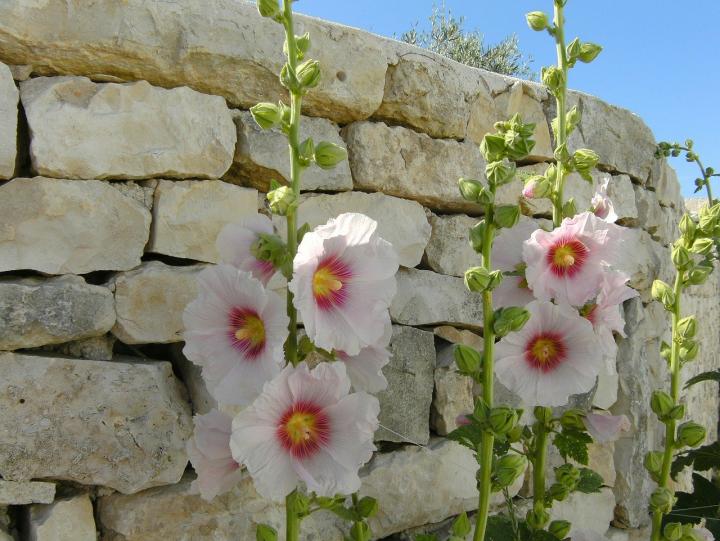It’s hollyhock season! Ever made hollyhock flower dolls? This age-old craft has been enjoyed by children for hundreds of years and is a delightful activity to share with the next generation. See how to make hollyhock dolls in five steps.
Hollyhock flowers are truly an old garden favorite, similar to hibiscus. In fact, hollyhocks (Althaea rosea) are part of the hibiscus, or mallow, family (Malvaceae). You might just call them the hibiscus’ cousin. The botanical name comes from the Latin word “altheo,” which means “to cure,” because many hollyhocks have medicinal properties.
To make a hollyhock doll, first, decide whether to use the traditional hollyhock or another similar flower.

How to Make a Hollyhock Doll
- Pick a nice bud with some color showing and a lovely open flower.
- Carefully peel away the small green sepals that enclose the bud. Stop when you reach the folded flower petals.
- With the point of a toothpick, carefully push through the bottom of the bud to make a small hole.
- Push the small stem of the opened flower (the skirt) into the hole at the base of the bud’s folded petals (the doll’s head).
- The dolls will keep for a day or two in the refrigerator—just gently place them in a bowl with a wet paper towel and cover lightly.
The dolls can make lovely decorations, garden party favors, or whatever a child’s imagination decides. Enjoy!

Growing Hollyhocks
Old-fashioned hollyhocks are a long-blooming flower and grow up to 6 feet high. Plant in the early spring or in the fall. Select a sunny location sheltered from the wind. Hollyhocks tolerate almost any well-draining soil as long as they get plenty of sun.
Traditionally, hollyhocks are grown against a building or fence. Or, cover that old shed with an orange trumpet vine! They do attract bees as pollinators, so we’d avoid placing them too near the door of your house.

Tall spires of hollyhocks are breathtaking as cut flowers, and in a mixed bouquet, it’s easy to remove any scarred or damaged leaves. Arrange them with bellflowers, phlox, baby’s breath, and roses for a cottage-garden-in-a-vase.
Plant hollyhocks in groups of 8 to 12, setting them about 2 feet apart. They will grow into a stunning solid mass, making a dramatic vertical statement on a grand scale. Many gardeners like the effect of single colors in a group. To orchestrate this, buy seeds of single colors and grow them apart.
Set off hollyhocks with a froth of baby’s breath, clumps of daisies or black-eyed Susans, phlox, lilies, or sweet Williams. Include a few chrysanthemums to keep them company as summer turns to fall. In some old-fashioned gardens, dahlias were often grown in front of hollyhocks to hide their “shins.” Shorter annual hollyhocks are wonderful combined with climbing roses near a door or trellis, adding their jewel-bright tones to the splash of color.
Hollyhocks will readily reseed. The seeds are also easily gathered and spread throughout the garden.
See our Hibiscus Plant Page.
If you enjoy natural crafts, learn how to make cornhusk dolls in autumn!
Comments